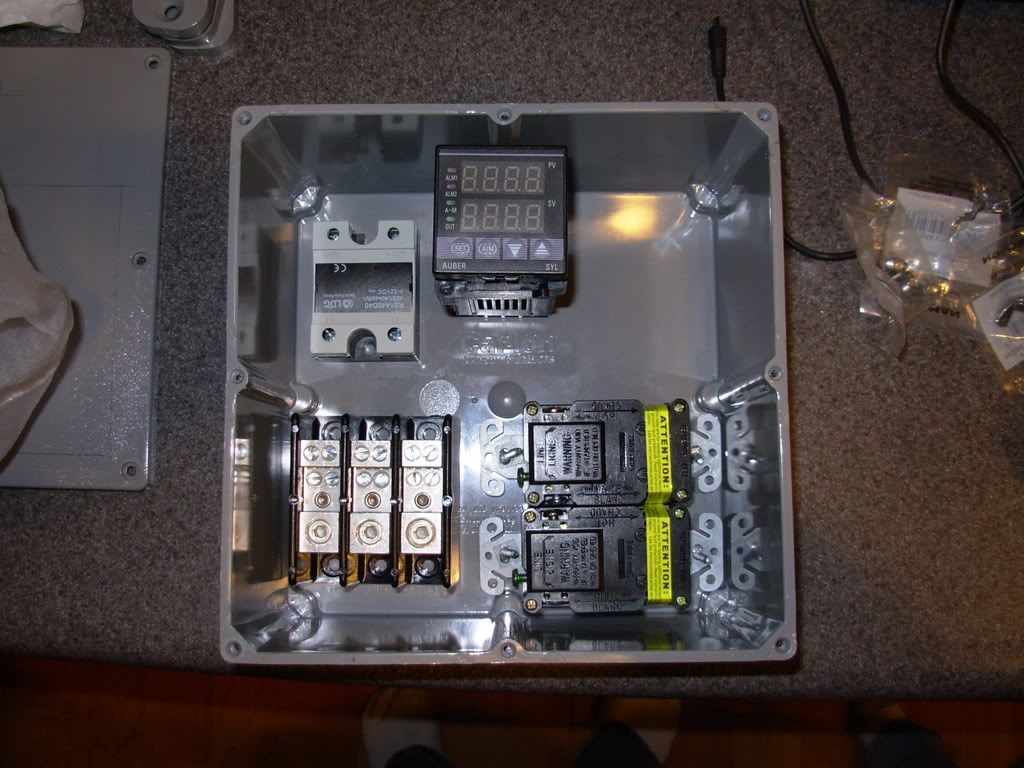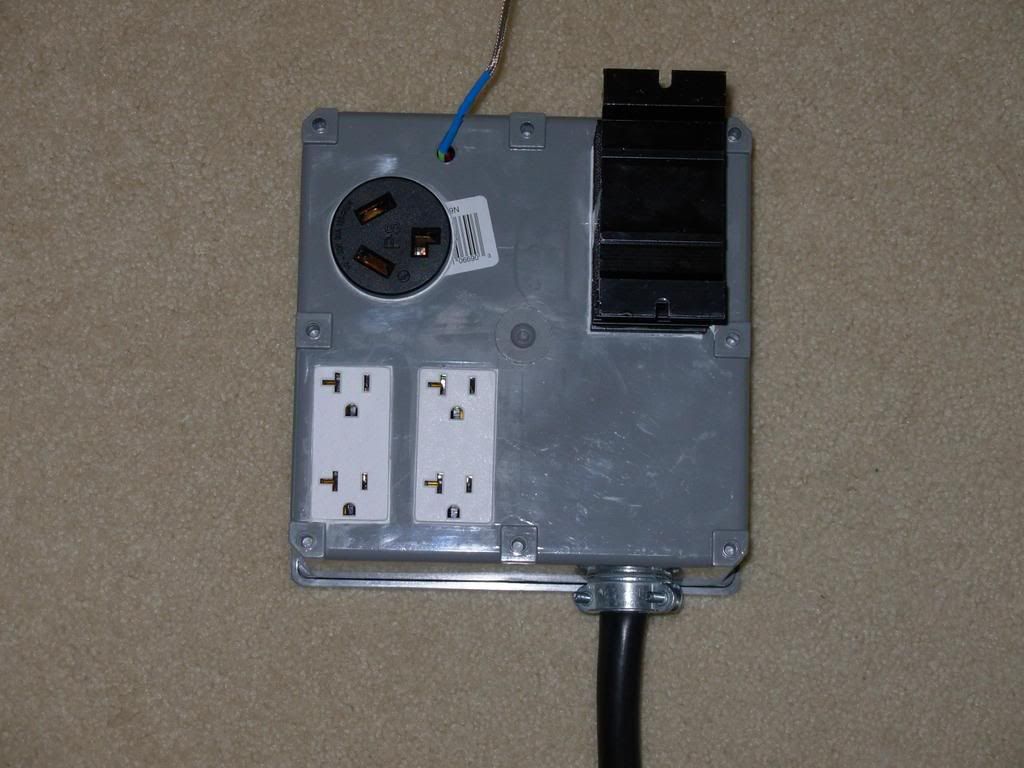Auber is great, I posted a thread on them previously, HIGHLY recommend doing business with them for PIDS and SSRs. My heat sink works wonderfully and does not need a fan, it runs pretty cool with ambient air.
Manual mode is easy to set... there is one parameter that you will need to change in the PID that I have listed in my parts list, to activate the manual option. Once that is done, you can simply toggle between AUTO and MANUAL with the touch of ONE button. When you are in manual mode, the SV will be your percentage... if you need help, I can help you through it. I spent an hour in my garage playing with parameters when I set mine up.
I ran ONE 240VAC line... 6/2 8/2 range cord to the control box. That is 4 wires... neutral and ground are 8AWG and the hots are 6AWG. I used ONE leg to power the PID with 14AWG wire. The PID has one HOT and one NEUTRAL. I used a simple ditribution block as seen in some pics, to split the hots, and neutral. I have a separate (7) terminal grounding bar in the box as well. EVERYTHING is grounded that can be... switches, outlets etc.
I can boil 7.5 gallons from 70F pretty quickly... reaching a boil after the sparge will be a piece of cake.
ALSO, someone questioned my useage of the 1/4" long thermocouple in my keggle, noting that it may not have a very accurate reading. Well, when I boil it reads 210F... so that sounds pretty accurate. Also, when I am chilling the wort, I stir periodically anyway to keep the wort circulating around the chiller. The small thermocouple works precisely as I predicted and desired. There is no difficulty in measuring the temp in the BK accurately.







